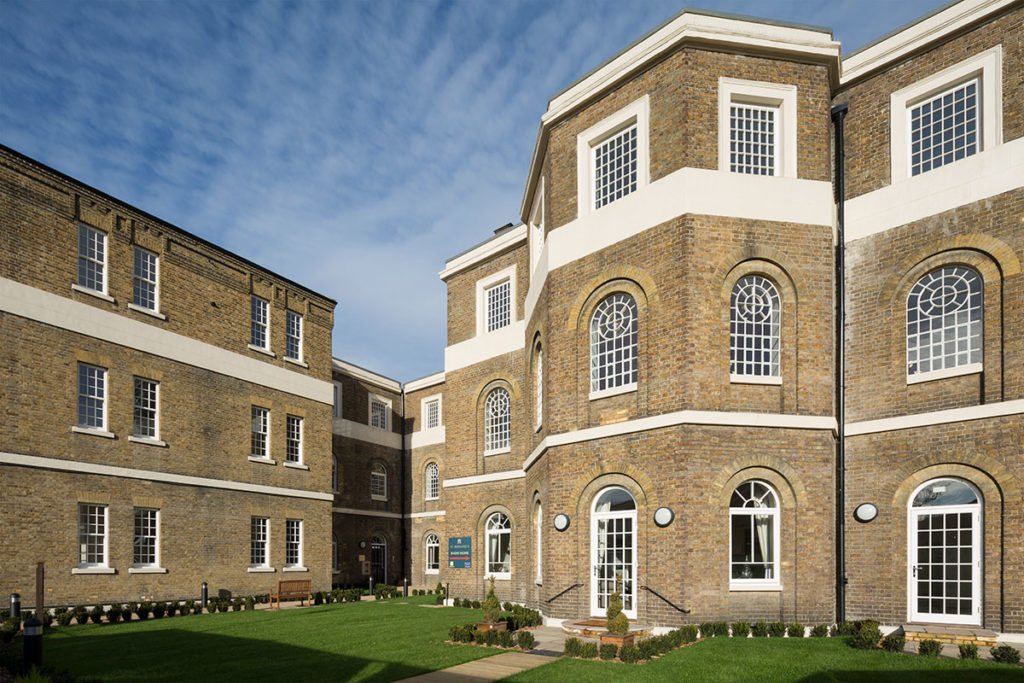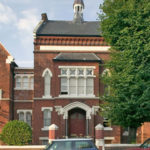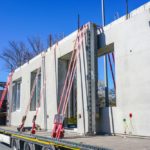News - Construction News
How Listed Buildings can help with the housing crisis
27 Jun 22

It’s no secret that the UK is in the midst of a housing crisis.
Too many can’t find affordable homes, and homelessness is a growing social problem. There is a clear imperative for Britain’s housebuilders to be building more supply to meet this demand. Housing Secretary Michael Gove has implored developers to build “beautiful homes [that]. .. lift the heart”.
One route to growing the UK’s housing stock while preserving the beautiful communities about which Gove is an “unashamed romantic” is by thinking cleverly and innovatively about listed buildings, and how they can be developed into housing.
In this article, we speak with Kamal Pankhania, Managing Director and Chief Executive of Westcombe Group – a family property and development business specialising in renovating and converting beautiful Grade I and Grade II listed buildings which have fallen into disrepair – about the challenge of bring older building back to life and how they can help address the housing crisis.
Why are Listed Buildings a challenge?

Connaught Mews
Our company, Westcombe Group, specializes in redeveloping Grade I and Grade II listed buildings that have fallen into disrepair – anything from an old army barracks to a former hospital – and turning them into beautiful homes. Listed buildings often have a special place within with their communities, and as such can be a source of attractive housing, helping to maintain a sense of neighbourhood pride.
However, converting old, listed buildings to develop them into modern, beautiful homes is no mean feat.
There are real challenges to be overcome.
- Disrepair
Firstly, old, listed buildings can often be in a state of disrepair and disuse. You need to be creative and innovative to see a new purpose and new future for the project.
The more dilapidated a building is, the more risk there is in deciding to acquire it. You often don’t know how run down or damaged an old building before you buy it. Common problems discovered after you acquire a building include dry rot, pigeon infestations, or roofs having fallen through internally. All of these can underpin significant structural damage to a building and make it harder to develop a project to budget and on time.

Roan Courtyard
For instance, we purchased Roan Courtyard, a former Victorian School, several decades ago. The school was acquired with a severely damaged roof, which we had to replace from scratch. We needed heavy immobilization of our cranes, a challenge in a heavily residential and compact area with restricted working access. However, through taking great care using an efficient and rapid construction team, we converted the site into 38 apartments for local communities.
- Planning
Secondly, planning procedures can get in the way, slowing down an already timely process. Proper planning is important, but the system is congested with insufficient and inefficient resourcing, and it takes us a great deal of time (up to 18 months, much longer than the usual 8-13 weeks) – to proceed with our planning applications, which slows down our efforts to provide more historic homes in local communities.
However, this in turn can create more problems from competing interests within the system. Conservation officers often seek to preserve listed buildings’ features, such as windows which in 99% of cases are single-glazed and rotten beyond use. However, control inspectors are interested in preventing heat loss, preferring modern double-glazed windows.

The Bell Yard
It’s a difficult balance to try and maintain and makes the planning process for listed buildings that much harder. It takes a lot of patience and perseverance, and of course an awareness that your project is going to run into complications – it’s crucial that this long lead time is factored into our project planning.
- Communities
Ultimately, the development needs to be part of the community – which is why local engagement isn’t something that can be rushed. There is more scrutiny, and more pressure to deliver, when your building is already a well-established and well-known listed building. Often people can be wary of change when you are trying to alter the nature and purpose of a listed building in their area – there’s real pressure to deliver.
Through engagement with residents and local businesses, it’s important to think about how the essence of the building’s history and tradition can be preserved, while making sure it is properly equipped for the future, with all the design features you would expect of a modern home, such as insulating double glazing and EV charging facilities. The homes must be able to effectively serve the needs of the local community – for instance, renovated listed buildings can be a fantastic source of affordable social housing, if the will is there.
A rewarding challenge
This challenge is precisely why converting listed buildings is such a rewarding endeavour. In developing a listed building we take something historic and breathe fresh life into it – there is a real sense of achievement and pride that we feel when we see a newly-revamped historic building repurposed to provide beautiful homes.
It’s inarguable that the UK needs more houses – and fast. If we want more homes with a sense of history and of belonging to their communities, why not look to Britain’s old, listed buildings? It won’t be easy – but it’s worth it.
If you would like to read more stories like this, then please click here
More News
- UK Introduces New Trade Measures to Support Steel Sector
11 Jul 25
Steel producers across the UK will benefit from stronger trade measures from 1 July.
- Clean energy future to be ‘built in Britain’
10 Jul 25
The Clean Energy Industries Sector Plan comes into force to ‘build it in Britain’.
- Thousands more to get the tools they need to start construction careers
9 Jul 25
Thousands of people are set to benefit from on-the-job training and career opportunities in the
-
-
Latest News
- UK Introduces New Trade Measures to Support Steel Sector
11 Jul 25
Steel producers across the UK will benefit from stronger trade measures from 1 July.
- Clean energy future to be ‘built in Britain’
10 Jul 25
The Clean Energy Industries Sector Plan comes into force to ‘build it in Britain’.
- Thousands more to get the tools they need to start construction careers
9 Jul 25
Thousands of people are set to benefit from on-the-job training and career opportunities in the
- €500Bn German infrastructure fund could benefit British businesses
8 Jul 25
€300bn of the fund is earmarked for the modernisation of Germany’s transport infrastructure.
- Level 7 apprenticeship funding cuts will cost building companies millions in increased training costs
7 Jul 25
The government’s decision to cut levy funding of Level 7 apprenticeships will cost UK employers.
- New National Housing Bank
4 Jul 25
Hundreds of thousands of extra homes will be delivered thanks to a bold new government-backed
-
-






